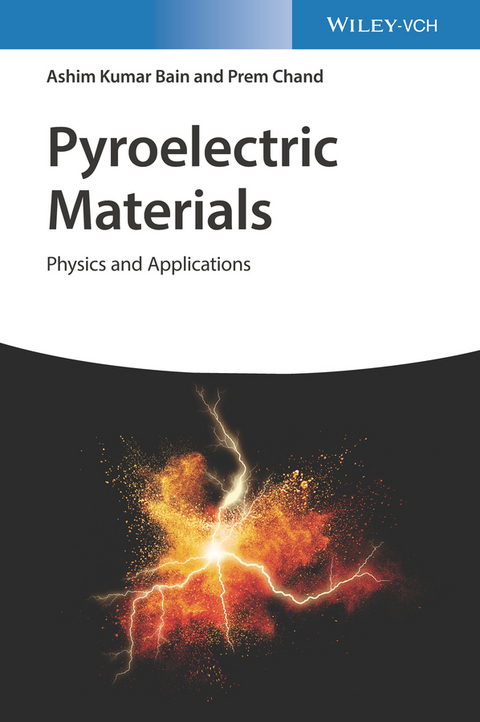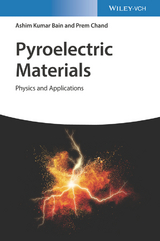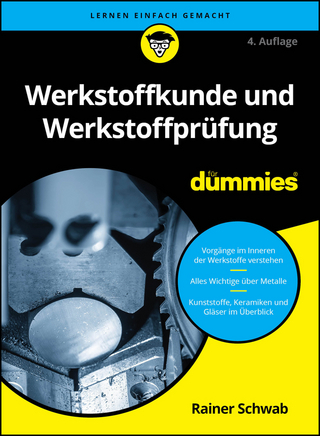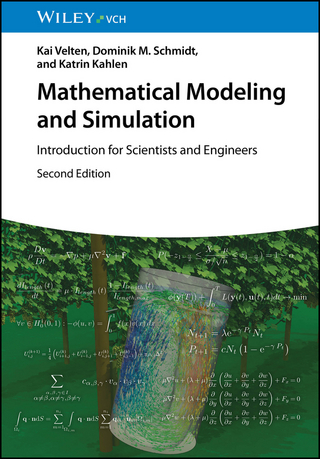Pyroelectric Materials
Wiley-VCH (Verlag)
978-3-527-35101-5 (ISBN)
Ashim Kumar Bain, PhD, is a Former Research Fellow at the School of Electronic, Electrical and System Engineering, University of Birmingham, UK. Dr. Ashim Kumar Bain received his M.Sc. (Physics) degree in 1989 from Rajshahi University, Bangladesh, and his Ph.D. (Materials Science) degree from Dniepropetrovsk State University, Ukraine, in 1994. He was a postdoctoral research fellow (1995-1998) at the Indian Institute of Technology Kanpur, India.Prem Chand, PhD, is Professor at the Department of Physics, Indian Institute of Technology Kanpur, India. He has authored more than hundred scientific publications several review articles and two invited book chapters on ferroelectrics.
1 Fundamentals of Dielectrics
1.1 Dielectrics
1.1.1 Polarization of Dielectrics
1.1.2 Dispersion of Dielectric Polarization
1.1.2.1 Electronic Polarization
1.1.2.2 Ionic Polarization
1.1.2.3 Orientation Polarization
1.1.2.4 Space Charge Polarization
1.1.3 Dielectric relaxation
1.1.4 Debye relaxation
1.1.5 Molecular Theory of Induced Charges in a Dielectric
1.1.6: Capacitance of a Parallel Plate Capacitor
1.1.7 Electric displacement field, Dielectric constant, and Electric susceptibility
1.1.8 Local Field in a Dielectric
1.1.8.1 Lorentz field, E2
1.1.8.2 Field of dipoles inside cavity, E3
1.1.9 Dielectrics Losses
1.1.9.1 Dielectric Loss Angle
1.1.9.2 Total and Specific Dielectric Losses
1.1.10: Dielectrics Breakdown
2 Pyroelectricity
2.1 Introduction
2.2 History of pyroelectricity
2.3 Theory of Pyroelectricity
2.4 Simple model of pyroelectric effect
2.5 Pyroelectric crystal symmetry
2.6 Piezoelectricity
2.7 Ferroelectricity
2.7.1 Ferroelectric Phase Transitions
2.7.2 Ferroelectric Domains
2.7.3 Ferroelectric Domain Wall Motion
2.7.4 Soft mode
3 Pyroelectric materials and Applications
3.1 Introduction
3.2 Theory of Pyroelectric Detectors
3.3 Material Figure-of-Merits
3.4 Classification of pyroelectric materials
3.4.1 Single crystals
3.4.1.1 Triglycine sulphate (TGS)
3.4.1.2 Lithium tantalate (LT) and Lithium niobate (LN)
3.4.1.3 Barium strontium titanate (BST)
3.4.1.4 Strontium barium niobite (SBN)
3.4.2 Perovskite Ceramics
3.4.2.1 Modified lead zirconate (PZ)
3.4.2.2 Modified lead titanate (PT)
3.4.3 Polymers
3.4.4 Ceramic-polymer composites
3.4.5 Lead-free ceramics
3.4.6 Other pyroelectric materials
3.4.6.1 Aluminium nitride (AlN)
3.4.6.2 Gallium nitride (GaN)
3.4.6.3 Zinc oxide (ZnO)
4 Pyroelectric Infrared Detectors
4.1 Introduction
4.2 Device configurations
4.2.1 Thick film detectors
4.2.2 Thin film detectors
4.2.3 Hybrid focal plane array detector
4.2.4 Linear array detector
4.2.5 Periodic domain TFLTTM detector
4.2.6 Terahertz thermal detector
4.2.7 PVDF polymer detector
4.2.8 TFP polymer detector
4.2.9 TADPh polymer detector
4.2.10 Integrated resonant absorber pyroelectric detector
4.2.11 Resonant IR detector
4.2.12: Plasmonic IR detector
4.2.13: Graphene pyroelectric bolometer
5 Pyroelectric Energy Harvesting
5.1 Introduction
5.2 Theory of Pyroelectric Energy harvesting
5.3 Pyroelectricity in Ferroelectric Materials
5.3.1 Thermodynamic Cycles of PyEH
5.3.1 (a) Carnot Cycle
5.3.1 (b) Ericsson Cycle
5.3.1 (c) Olsen Cycle
5.4 Pyroelectric Generators
5.5 Pyroelectric Nanogenerators
5.5.1 Polymer Based Pyroelectric Nanogenerators
5.5.1.1 PyNGs Driven by Various Environmental Conditions
5.5.1.2 Development of Pyroelectric Materials
5.5.1.3 Wearable Pyroelectric Nanogenerators
5.5.1.4 Hybrid Pyroelectric Nanogenerators
5.5.2 Ceramic Based Pyroelectric Nanogenerators
5.5.2.1 ZnO based pyroelectric Nanogenerators
5.5.2.2 PZT based pyroelectric Nanogenerators
5.5.2.3 Lead-free Ceramic based pyroelectric Nanogenerators
5.5.3 Thermal nanophotonic- pyroelectric nanogenerator
5.5.4 Challenges and Perspectives of Pyroelectric nanogenerators
6 Pyroelectric fusion
6.1 Introduction
6.2 History of Pyroelectric Fusion
6.3 Pyroelectric neutron generators
6.4 Pyroelectric X-ray generators
| Erscheinungsdatum | 12.10.2022 |
|---|---|
| Verlagsort | Weinheim |
| Sprache | englisch |
| Maße | 170 x 244 mm |
| Gewicht | 424 g |
| Themenwelt | Naturwissenschaften ► Chemie |
| Technik ► Elektrotechnik / Energietechnik | |
| Technik ► Maschinenbau | |
| Schlagworte | Chemie • Chemistry • Electrical & Electronics Engineering • Electronic materials • Elektronische Materialien • Elektrotechnik u. Elektronik • Festkörperchemie • Materials Science • Materialwissenschaften • Pyroelektrizität • solid state chemistry |
| ISBN-10 | 3-527-35101-9 / 3527351019 |
| ISBN-13 | 978-3-527-35101-5 / 9783527351015 |
| Zustand | Neuware |
| Informationen gemäß Produktsicherheitsverordnung (GPSR) | |
| Haben Sie eine Frage zum Produkt? |
aus dem Bereich




